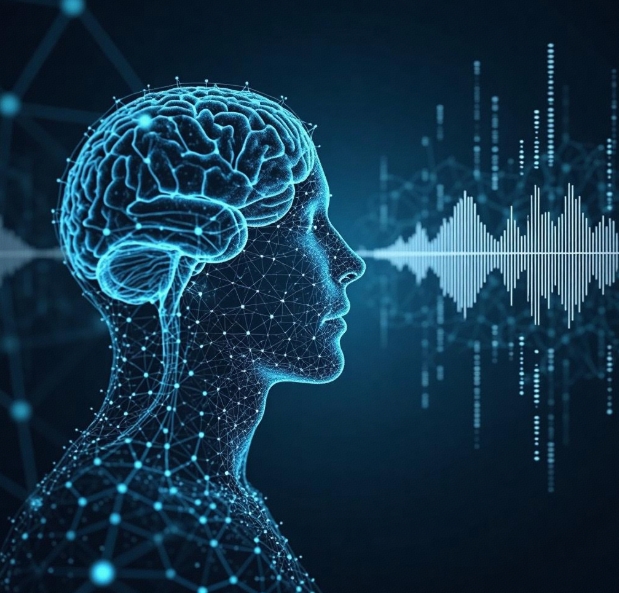Technological Developments and Applications of Artificial Intelligence in Speech Recognition
- latest articles
- 1.DApp Development & Customization: Merging Diverse Market Needs with User Experience 2.Analysis of the Core Technical System in DApp Project Development 3.How to achieve cross-chain interoperability in Web3 projects? 4.How does the tokenization of points reconstruct the e-commerce ecosystem? 5.How to Set and Track Data Metrics for a Points Mall? 6.What is DApp Development? Core Concepts and Technical Analysis 7.Inventory of commonly used Web3 development tools and usage tips 8.Development of a Distribution System Integrated with Social E-commerce 9.Six Key Steps for Businesses to Build a Points Mall System 10.What is DApp Development? A Comprehensive Guide from Concept to Implementation
- Popular Articles
- 1.Future Trends and Technology Predictions for APP Development in 2025 2.Analysis of the DeFi Ecosystem: How Developers Can Participate in Decentralized Finance Innovation 3.From Zero to One: How PI Mall Revolutionizes the Traditional E-commerce Model 4.DAPP Development | Best Practices for Professional Customization and Rapid Launch 5.Recommended by the Web3 developer community: the most noteworthy forums and resources 6.From Cloud Computing to Computing Power Leasing: Building a Flexible and Scalable Computing Resource Platform 7.How to Develop a Successful Douyin Mini Program: Technical Architecture and Best Practices 8.Shared Bike System APP: The Convenient Choice in the Era of Smart Travel 9.How to Create a Successful Dating App: From Needs Analysis to User Experience Design 10.From Design to Development: The Complete Process of Bringing an APP Idea to Life
With the continuous advancement of technology, the application of artificial intelligence (AI) has become increasingly widespread across various fields. Among these, speech recognition technology, as a core application, has permeated our daily lives. Breakthroughs in speech recognition technology have made interactions between humans and machines more natural and convenient, driving the rapid development of smart devices and services. Particularly in industries such as smart homes, voice assistants, healthcare, and customer service, speech recognition technology is playing an increasingly important role. This article will explore the technological development history of AI in speech recognition, its core technologies, and its application prospects across different industries.
I. The Relationship Between Artificial Intelligence and Speech Recognition
Artificial intelligence is a technological system that simulates and extends human intelligence, encompassing subfields such as machine learning, natural language processing, image recognition, and speech recognition. Speech recognition, as an important branch of AI, focuses on enabling computers to understand and process human speech signals, thereby achieving functions like speech-to-text conversion and voice command recognition.
Early speech recognition technology primarily relied on predefined vocabulary and grammatical rules, resulting in limited recognition effectiveness and strong dependency on environmental conditions. With the development of advanced algorithms such as deep learning, convolutional neural networks (CNN), and recurrent neural networks (RNN), the accuracy of speech recognition has significantly improved, allowing for accurate recognition of speech content in more complex environments. Therefore, advancements in AI technology have brought unprecedented development opportunities to speech recognition.
II. Technological Development of AI in Speech Recognition
The technological development of speech recognition can be divided into several stages: rule-based speech recognition, template-matching-based speech recognition, statistically model-driven speech recognition, and the current mainstream deep learning-based speech recognition technology.
Rule-Based Speech Recognition
Early speech recognition technology relied on rules and algorithms. This method primarily identified speech by predefining speech units and grammatical rules. Its main advantages were computational simplicity and ease of understanding, but its recognition accuracy was low, and it performed poorly with complex speech inputs. Additionally, this method had poor tolerance for different pronunciations and could not handle variations in speech speed or accent differences.
Template-Matching-Based Speech Recognition
With the advancement of computer technology, template-matching methods gradually replaced rule-driven speech recognition systems. This approach identifies speech units by comparing speech signals with a predefined template library. Template matching can improve speech recognition accuracy to some extent, but it still faces challenges in noisy environments or with fast speech recognition.
Statistically Model-Driven Speech Recognition
In the 1990s, statistical models became a significant milestone in the development of speech recognition technology. Statistical methods such as Hidden Markov Models (HMM) and Gaussian Mixture Models (GMM) were widely applied in modeling speech signals. These models use probabilistic statistical methods to model and train speech signals, significantly improving the accuracy and robustness of speech recognition. HMM and GMM can handle various variables such as different pronunciations, speech speeds, and accents, greatly enhancing the performance of speech recognition technology in complex environments.
Deep Learning-Driven Speech Recognition
In recent years, the rise of deep learning has fundamentally transformed the landscape of speech recognition technology. Deep learning models such as Deep Neural Networks (DNN), Convolutional Neural Networks (CNN), and Recurrent Neural Networks (RNN) enable speech recognition systems to effectively train and optimize in more complex environments. Compared to traditional methods, deep learning can automatically learn features from large amounts of speech data, avoiding the cumbersome process of manually designing features. The application of this technology has significantly improved the accuracy and efficiency of speech recognition, particularly excelling in areas such as multi-speaker recognition, noisy backgrounds, and dialect recognition.
III. Key Technologies of AI Speech Recognition
Driven by deep learning technology, the implementation of AI speech recognition relies on the following key technologies.
Acoustic Model
The acoustic model describes the relationship between sound signals and speech units. Traditional speech recognition relied on statistical models such as Hidden Markov Models (HMM), while modern deep learning models use neural networks to replace traditional statistical models, enabling more precise capture of audio features in speech signals. Deep learning models such as Convolutional Neural Networks (CNN) and Long Short-Term Memory Networks (LSTM) play a crucial role in this aspect.
Language Model
The language model is used to predict word sequences in speech recognition. Traditional n-gram models face limitations in vocabulary size and data sparsity when processing word sequences, whereas neural network-based language models (such as RNN and Transformer) can more flexibly handle complex grammar and context, improving the accuracy of speech recognition.
Voiceprint Recognition
Voiceprint recognition technology is used to identify a speaker's identity, relying on the speaker's pronunciation characteristics such as pitch, volume, and speech rate. Voiceprint recognition can be effectively applied in scenarios like smart voice assistants, customer service, and security monitoring, enhancing the security and personalization features of speech recognition systems.
End-to-End Speech Recognition
End-to-end speech recognition technology directly maps speech signals to text output, avoiding the intermediate processing stages of traditional methods. Deep neural networks, through one-time training, can achieve direct conversion from audio signals to text, significantly improving recognition efficiency and accuracy. The core technologies of end-to-end speech recognition include deep learning models such as Convolutional Neural Networks (CNN), Recurrent Neural Networks (RNN), and Transformer.
IV. Application Areas of AI Speech Recognition
AI speech recognition technology has been widely applied across various industries. Below are several important application areas.
Smart Assistants and Smart Homes
Smart assistants (such as Apple's Siri, Google Assistant, and Amazon Alexa) are among the most common applications of speech recognition technology. Users can control devices, query information, set reminders, and more through voice commands. Additionally, smart home systems utilize speech recognition to control lighting, temperature, appliances, and other devices, providing a more convenient user experience.
Healthcare
In the medical field, speech recognition technology holds significant application potential. Doctors can input patient conditions, diagnoses, and treatment plans via speech, with the system automatically converting the speech into electronic medical records, reducing the workload of traditional manual recording. Additionally, speech recognition can be applied in scenarios such as telemedicine and patient monitoring, improving the efficiency and quality of healthcare services.
Customer Service and Call Centers
In the customer service and call center industry, speech recognition technology is widely used for automated services. Customers can interact with the customer service system via speech, with the system automatically identifying issues and providing solutions. Speech recognition systems can improve response speed, reduce the workload of human agents, and enhance customer satisfaction.
Education and Language Learning
In the field of education, speech recognition technology can help students improve pronunciation accuracy and oral expression skills. Through speech recognition systems, students can engage in pronunciation evaluation and interactive speech learning, receiving immediate feedback. Additionally, speech recognition technology can be applied in scenarios such as intelligent translation and cross-language communication.
Security and Monitoring
Speech recognition technology is also applied in the security and monitoring field. Through voiceprint recognition, systems can verify personnel identity and prevent unauthorized access. Additionally, voice monitoring can be used in intelligent security systems to promptly detect abnormal situations and issue alerts.
V. Future Development Trends and Challenges
Although AI speech recognition technology has made significant progress, it still faces some challenges in practical applications. First, the robustness of speech recognition in complex environments remains a critical issue, as factors such as noise, multi-person conversations, and accent differences can affect recognition accuracy. Second, speech recognition systems heavily depend on data, and improving training efficiency and data processing capabilities remains a research focus.
In the future, with advancements in computing power, algorithm optimization, and data processing technology, speech recognition technology will usher in broader application prospects. Particularly in areas such as multimodal learning, cross-language recognition, and real-time speech translation, speech recognition technology is expected to further break through existing technical bottlenecks, creating more intelligent and convenient application scenarios.
Conclusion
The development of AI technology in the field of speech recognition has greatly advanced human-computer interaction. From traditional rule-based and template methods to modern deep learning-driven technologies, speech recognition systems have become more intelligent and accurate, with increasingly broad application areas. As technology continues to innovate, speech recognition will play an even more important role in people's daily lives and work, delivering more intelligent service experiences.
-

How does artificial intelligence technology transform the operational models of modern enterprises?
In the wave of the digital era, artificial intelligence (AI) technology has tran···
-

How to Utilize Artificial Intelligence for Precision Medicine and Health Management
With the rapid advancement of technology, artificial intelligence (AI) has demon···
-

Integration and Application of Artificial Intelligence and Robotics
In today's era of rapid technological advancement, the integration of artificial···

 Blockchain
Blockchain












